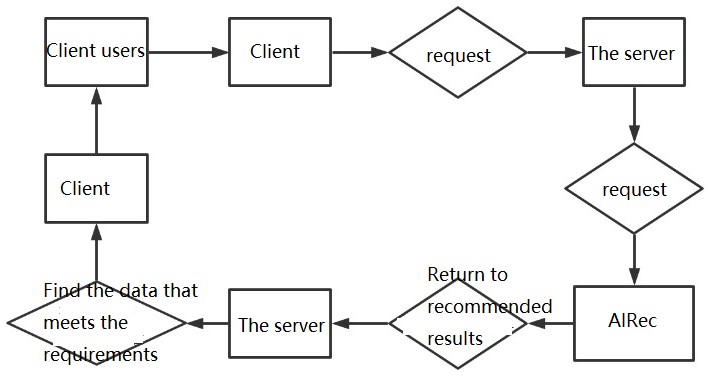Item validity
1. What is the item validity?
An item becomes unavailable immediately after it is removed from the listing. However, it may take an hour to list an item.
AIRec console
1. What is exposure blocking? Why is the feature introduced? What is the impact of this feature on AIRec users?
Exposure blocking is a feature that is used to block the items that have been recommended to the same user. This ensures that the same items are no longer recommended to the same user in a period of time. The exposure blocking period specified on AIRec is 31 days. This means that if an item has been browsed by a user, the item is no longer recommended to the same user within 31 days. Note: Exposure blocking is implemented based on the behavioral data recorded by AIRec within 10 hours and based on the behavioral data returned by users after 10 hours.
For example, user A uses userid=1 to query data from AIRec and recalls data of itemid=N. At that time, AIRec records the recommendation behavior and no longer recommends data of itemid=N to userid=1 within 10 hours. If user A does not return behavioral data of userid=1, itemid=N, bhv_type=expose to AIRec in real time, AIRec may recommend data of itemid=N to userid=1 after 10 hours. If user A returns the behavioral data to AIRec in real time, AIRec no longer recommends data of itemid=N to userid=1 within 31 days.
For more information, see Improve the diversity of recommendations by using instance operation rules.
2. What is the expose behavior? Must the expose and click behavior be included in the uploaded behavioral data?
The expose behavior corresponds to the bhv_type field in the behavior table. The expose behavior is a type of user behavior. One expose behavior entry is generated if an item is exposed to a user. Exposure data is required for AIRec. If no exposure data exists, you must construct exposure data to initialize and start AIRec, and use event tracking to collect exposure data and report only the incremental data.
AIRec supports behavioral data from different industries. For more information, see data specifications for the content, e-commerce, and news industries. The algorithm model is trained to increase the click through rate (CTR). AIRec will support behavioral data of more industries in the future.
For more information about exposure behavior and event tracking, see Use event tracking.
3. What results are returned by AIRec? How do I use the results?
AIRec returns JSON data. The following table lists the fields contained in JSON data.  traceId: the ID of the query or event tracking. This field is used to identify the Alibaba Cloud recommendation engine that is called during A/B testing. If behavioral data is generated by calling the Alibaba Cloud recommendation engine, set this field to Alibaba. If behavioral data is generated based on self-managed or operations recommendation data, set this field to selfhold.
traceId: the ID of the query or event tracking. This field is used to identify the Alibaba Cloud recommendation engine that is called during A/B testing. If behavioral data is generated by calling the Alibaba Cloud recommendation engine, set this field to Alibaba. If behavioral data is generated based on self-managed or operations recommendation data, set this field to selfhold.
itemId: the unique ID of an item. itemType: the type of an item. The itemId and itemType fields are used together to uniquely identify a piece of data.
traceInfo: the information about request event tracking. This field is returned after a recommendation-related operation is called. This field is recorded in logs. 1. This field is required only for traffic on Alibaba Cloud and remains empty for other traffic. 2. The result returned by a query-related operation of AIRec contains the traceInfo field that is directly included in the recommendation result.
weight: the weight of an item. Valid values: 100 and 1. A value of 100 indicates that an item is weighted, and a value of 1 indicates that an item is not weighted.
position: the position of content. A value of 0 indicates that the content is placed first, and the values 1 to n indicate that the content is sequentially placed after the first position. This is the recommended content sequence after model training. We recommend that you push recommendations strictly based on the position information.